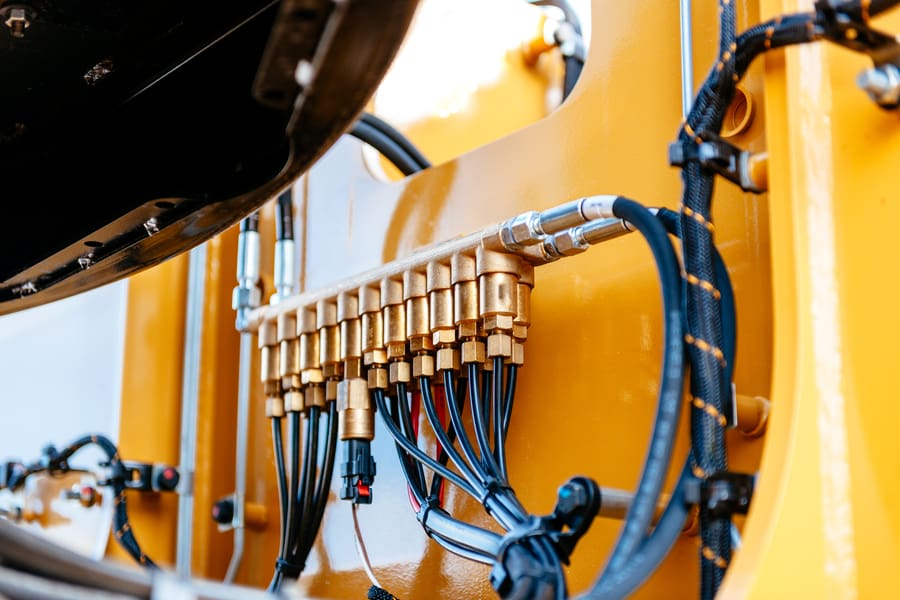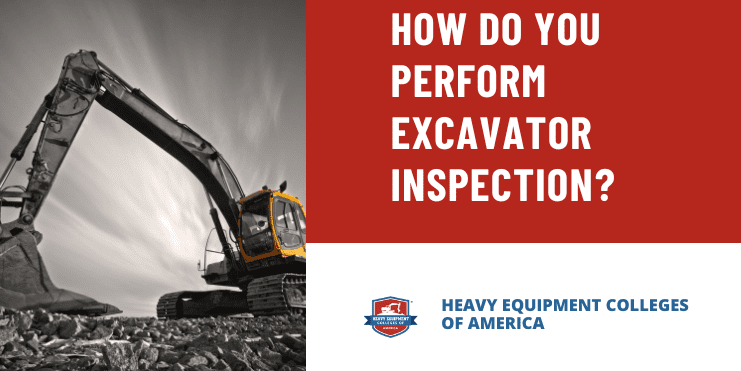Excavators are a key heavy equipment piece to many projects.
Sometimes called diggers, most excavators contain the same components. The most recognizable features of any excavation are the boom, dipper, and bucket. Each component comes together to move heavy objects, dig, or demolish them.
But with such immense size and power comes the responsibility of ensuring that you’re operating safely. Proper operation starts with checking equipment before using it. That’s why you must always perform an excavator inspection. Read on to learn how to perform an excavator inspection properly.
Table of Contents
How To Operate an Excavator?
The first step to operating an excavator is to ensure you climb aboard safely. It may seem painfully obvious, but every year the leading cause of construction-related accidents is due to falling. Once inside safely, put on your seatbelt and turn your machine on. You may take the safety lock off after you ensure no hazard lights are on and that you have enough fuel.
For controls, excavators use joysticks. To move the boom up and down, use the right joystick. With the same joystick, you can open and close the bucket. If you want the excavator stick out, push the joystick forward left. To move it back, pull the joystick to your left backward.
To swing the cab around, use the left joystick. When it’s time to drive the excavator, use the pedals to accelerate forward—just be sure your pathway is clear. Once you’re in position, restabilize the machine.
How to Prevent Struck-by Injuries in Construction
Preventative measures that ensure safety on a worksite are called control measures. Here are eight control measures that can help prevent struck-by injuries in construction and ensure a safer working environment.
What Are the Operator’s Responsibilities
As an excavator operator, your first responsibility is to ensure you use the machine safely. This includes going through a heavy equipment inspection checklist before you even turn on the machine. Outside an excavator inspection, your duties as an operator may include:
- Earth or debris removal
- Dump earth or debris in trucks
- River dredging
- Landscaping
- Moving heavy materials around
Importance of Safety in Excavator Training & Heavy Equipment Training
While you may be excited to get in the excavator cab and begin operating, you must understand the importance of safety. OSHA reports that in 2019, an average of 100 workers every week suffered a fatal accident on site. That’s at least 15 lives lost a day. While not every accident can be prevented, practicing safe operation is your best chance to avoid injury or death. You must take safety training seriously to help yourself and your fellow workers stay safe.

How Do You Perform Excavator Inspection
Every operator should familiarize themselves with this excavator inspection checklist. Here’s an example of one:
- Walk around the work area to ensure there’s enough space for the machine to work within
- Before turning on the machine, inspect the boom, the dipper arm, and the bucket
- Look for any cracks or dents
- Ensure the locking pin and safety clip are in the correct position
- Inspect the undercarriage area
- Check the sprockets, idler wheels, track links, and rollers
- Look out for wear and tear signs
- Check the hydraulic fluid and coolant level
- Inspect the radiator for leaks

- Open the engine bay and perform an oil check with a dipstick
- Do this every four hours of operation
- Lubricate the bushings if needed
- Ensure indicator lights and controls are in working condition
- Test the equipment by
- Fully extend the boom arm and the dipper arm.
- Listen for unusual sounds.
- Lift the boom arm in the air and turn off the machine.
- Wait and see whether the boom arm moves downwards.
- If it does, you’ll know there’s an internal bypass in the cylinders.
- To find out if there’s any excessive movement in the boom arm and bucket, test it repeatedly
- Check the levers and joysticks to ensure they’re in working condition.
Check the safe operating - limits of your machine, which should be in the manual.
Find a Heavy Equipment School Near You
Did reading all of that help convince you to pursue a career in heavy equipment operation or construction? There are plenty of ways to get started—but only one way gives you the safety and practical training employers desire in as little as three weeks. At Heavy Equipment Colleges of America, we’re offering you the chance to get started on a rewarding career fast. Learn more about our programs and find a location near you!

